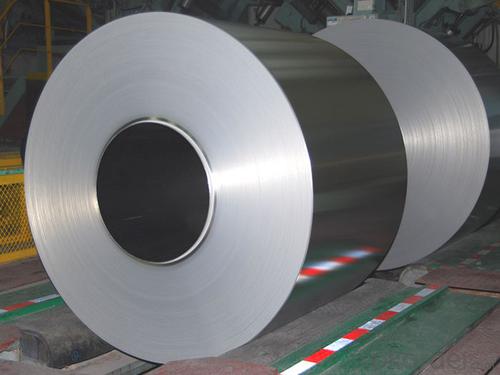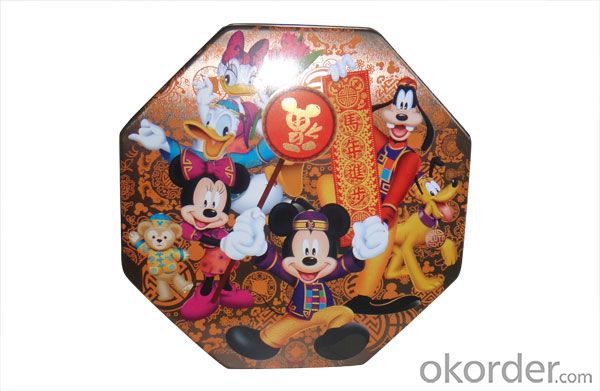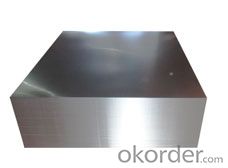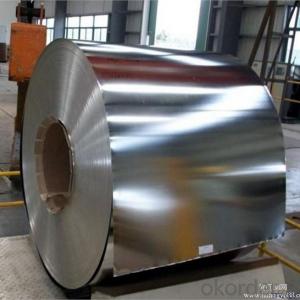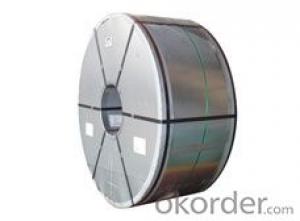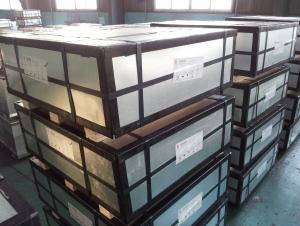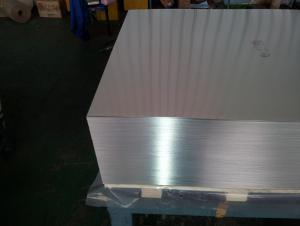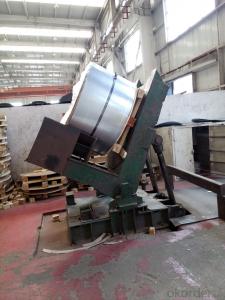Tinplate High Quality
- Loading Port:
- China Main Port
- Payment Terms:
- TT OR LC
- Min Order Qty:
- -
- Supply Capability:
- -
OKorder Service Pledge
Quality Product, Order Online Tracking, Timely Delivery
OKorder Financial Service
Credit Rating, Credit Services, Credit Purchasing
You Might Also Like
Tinplate is widely used for metal package like paint, chemical can,aerosol can and different food can production,
Also battery,electric cable and other industries. Below please kindly refer to our specifications:
| Steel Type | MR | ||
| Temper(BA&CA) | T1~T5, DR8, DR9 | ||
| Coating | 1.1~11.2g/m2 (Both Equal and Differential) | ||
| Thickness and tolerance | 0.15~0.50mm(Tolerance: _+0.01 mm) | ||
| Width & tolerance | 300~1000mm (Tolerance: 0~3mm) | ||
| Cut length & tolerance | 450~``50mm (Tolerance: 0~3mm ) | ||
| Coil inside diameter | 420/508mm | ||
| Coil Weight | 3~10 MT | ||
| Passivation | 311 | ||
| Oiling | DOS | ||
| Surface Finish | Bright, Stone, Silver, Matte | ||
| Packaging | Seaworthy Standard with wooden pallet | ||
| Standards Available | GB/T2520, JIS G3303, ASTM A623M & EN10202 | ||
| Special specitications are available on request. | |||
- Q: How does tinplate perform in terms of resistance to humidity?
- Tinplate performs exceptionally well in terms of resistance to humidity. The tin coating on the steel substrate provides a protective barrier that prevents moisture from reaching the metal, thus minimizing the risk of rust and corrosion. This makes tinplate an ideal packaging material for products that are sensitive to moisture, ensuring their integrity and longevity.
- Q: Can tinplate packaging be used for toy products?
- Yes, tinplate packaging can be used for toy products. Tinplate is a durable and versatile material that can be shaped into various sizes and designs, making it suitable for packaging toys. It provides an attractive and protective packaging solution, ensuring the safety and preservation of toy products.
- Q: What are the advantages of using tinplate in packaging?
- There are several advantages of using tinplate in packaging. Firstly, tinplate is highly durable and resistant to corrosion, ensuring product protection and extending shelf life. It also provides excellent barrier properties against light, oxygen, and moisture, preserving the quality and freshness of the packaged goods. Additionally, tinplate is lightweight, making it easy to handle and transport. Furthermore, it is a sustainable and recyclable material, contributing to environmental sustainability and promoting a circular economy. Lastly, tinplate offers a versatile and customizable packaging solution, allowing for attractive designs and branding opportunities.
- Q: What are the environmental benefits of using tinplate?
- The environmental benefits of using tinplate include its high recyclability rate, reducing waste and the need for new raw materials. Tinplate also provides an effective barrier against oxygen and moisture, helping to extend the shelf life of products and reduce food waste. Additionally, tinplate is lightweight, making it more energy efficient to transport and reducing carbon emissions.
- Q: What are the main growth opportunities for the tinplate industry?
- Some of the main growth opportunities for the tinplate industry include expanding into emerging markets, such as Asia and Africa, where there is a growing demand for packaged food and beverages. Additionally, the increasing focus on sustainable packaging solutions presents an opportunity for tinplate manufacturers to develop eco-friendly alternatives. Moreover, advancements in technology and automation can enhance production efficiency and allow the industry to cater to a wider range of customers. Lastly, the rise of e-commerce and online shopping could lead to increased demand for tinplate packaging for shipping and storage purposes.
- Q: What are the different types of tinplate cans available?
- There are several different types of tinplate cans available, including food cans, beverage cans, aerosol cans, paint cans, and general packaging cans.
- Q: What is the global demand for tinplate?
- The global demand for tinplate is significant and steadily growing due to its versatile applications across various industries, such as packaging, automotive, construction, and electronics. Tinplate's corrosion resistance, durability, and aesthetic appeal make it a preferred choice for manufacturing cans, containers, and other packaging materials. Additionally, the increasing focus on sustainability and recyclability has further boosted the demand for tinplate as it is highly recyclable.
- Q: How is tinplate different from other types of steel?
- Tinplate is different from other types of steel due to its unique coating of tin on both sides, which provides corrosion resistance, enhances the material's appearance, and makes it suitable for packaging applications.
- Q: How does tinplate affect the environment?
- Tinplate can have both positive and negative impacts on the environment. On one hand, tinplate is a highly sustainable packaging material as it is 100% recyclable and can be reused multiple times without losing its properties. This helps in reducing waste and conserving resources. Additionally, tinplate containers offer excellent protection to the contents, preventing food spoilage and reducing the overall carbon footprint associated with food wastage. However, the production of tinplate involves mining and extracting tin, which can have adverse effects on the environment. Mining activities can lead to habitat destruction, soil erosion, and contamination of water sources if not properly managed. Furthermore, the manufacturing process of tinplate involves energy-intensive procedures, emitting greenhouse gases and contributing to climate change. To mitigate these negative impacts, it is crucial to promote responsible mining practices, prioritize energy-efficient manufacturing techniques, and encourage recycling and reuse of tinplate to minimize its environmental footprint.
- Q: Can tinplate packaging be used for home decor products?
- Yes, tinplate packaging can be used for home decor products. Tinplate is a versatile material that can be molded into various shapes and sizes, making it suitable for packaging home decor items such as candles, ornaments, and small decorative accessories. Additionally, tinplate packaging offers a unique and aesthetically pleasing appearance that can enhance the overall presentation of home decor products.
Send your message to us
Tinplate High Quality
- Loading Port:
- China Main Port
- Payment Terms:
- TT OR LC
- Min Order Qty:
- -
- Supply Capability:
- -
OKorder Service Pledge
Quality Product, Order Online Tracking, Timely Delivery
OKorder Financial Service
Credit Rating, Credit Services, Credit Purchasing
Similar products
Hot products
Hot Searches
Related keywords



